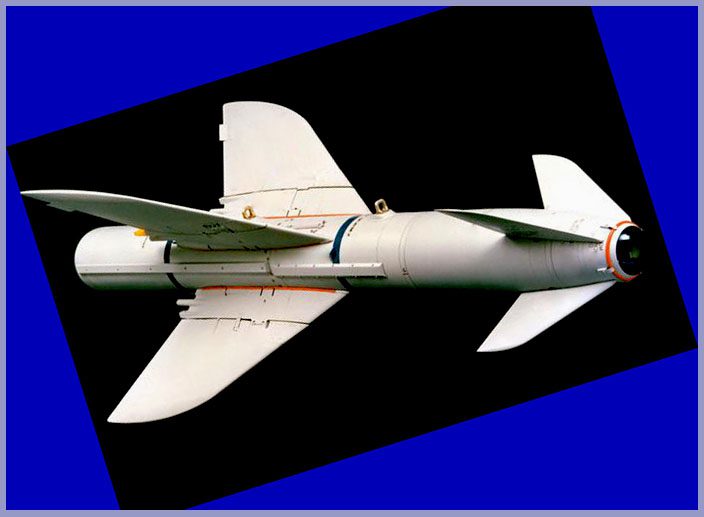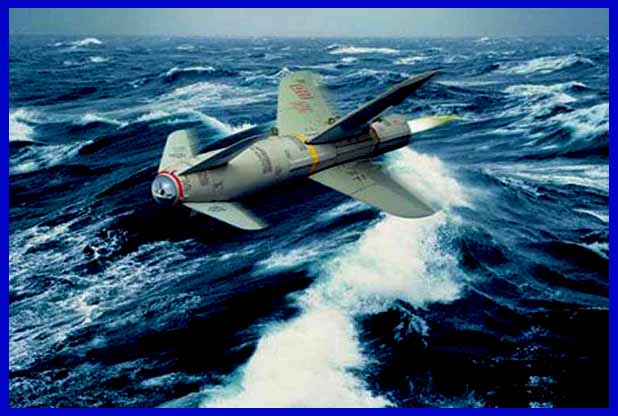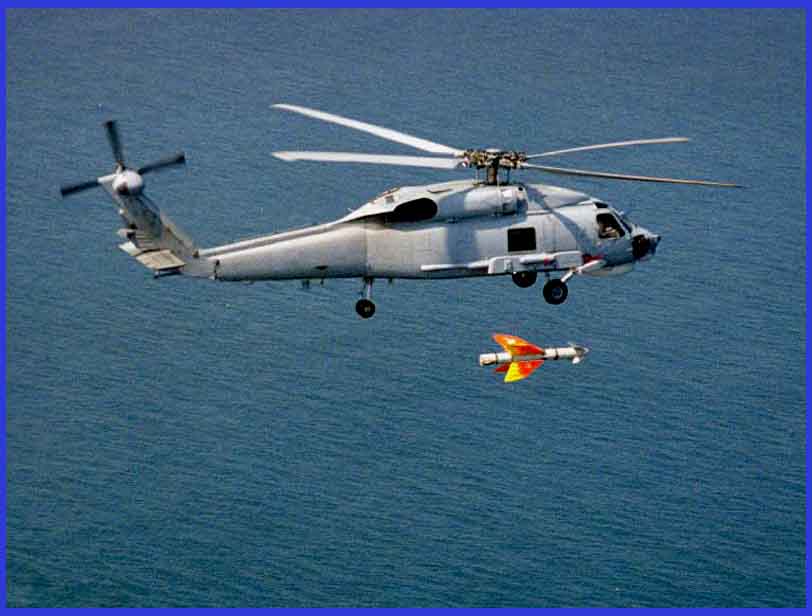The missile features an advanced guidance system, typically utilizing an infrared homing seeker for target acquisition and tracking. It is capable of skimming just above the surface of the water, making it difficult for enemy ships to detect and intercept. The AGM-119 can be launched from a variety of platforms, including naval vessels, aircraft, and coastal defence helicopters.
With a range of approximately 55 kilometres (30 nautical miles), the AGM-119 is capable of carrying a maximum of 130 kg high-explosive warhead to effectively engage and neutralize a range of naval targets, including frigates, patrol boats, and other surface vessels. Its precision, distinguished by the design of its large, curvy fins, and its ability to operate in challenging maritime environments, make it a valuable asset for coastal defence and anti-ship warfare in 2023 and beyond for its select operators.

Exploring Development and Analyzing Design: An In-Depth Overview
The development of the AGM-119 Penguin began in the 1960s in Norway. Its primary purpose was to provide Norway and other nations with a highly capable anti-ship missile to counter potential naval threats.
The Development Phases
The 1960s-1970s: The initial phase of development was centred on creating a missile with sea-skimming capabilities, rendering it challenging to detect and intercept. Designed for deck launch, the Penguin missile originated from a collaborative effort between the Norwegian Defence Research Establishment and Kongsberg Våpenfabrikk, commencing in the early 1960s. Financial backing came from the United States and West Germany, with the US Navy providing test facilities and technical support to expedite the development process. It marked a significant milestone as the first NATO anti-shipping missile to feature an IR seeker in lieu of the commonly employed active radar seeker.
1980s: Since entering series production in 1972, both hardware and software components have received updates. The missile has undergone continuous improvements, including enhancements to its guidance systems, propulsion, and warhead options. The fire control was managed by a Kongsberg SM-3 computer, capable of cueing the missiles using either active radar or passive ESM data.

Installations: The initial setup involved 500-kilogram (1,100 lb) deck-mounted box launchers equipped with snap-open doors. These launchers were specifically designed to minimize deck intrusion, making them suitable for retrofitting onto existing small ships. The inaugural installations took place on Snøgg-class and Storm-class patrol boats within the Norwegian Navy.
Subsequently, the first airborne installations occurred on Lockheed F-104G Star Fighters of the Norwegian Air Force, where the missiles were affixed to standard Bullpup rails on the aircraft’s two underwing hardpoints. In later versions, the AGM-119 was engineered for launch from various platforms, including aircraft, helicopters, and all types of naval vessels. Its adaptability facilitates seamless integration into diverse defence systems.
Guidance System: The AGM-119 Penguin primarily employs an infrared homing seeker that tracks the heat emissions from a ship’s engines. This missile can be launched individually or in coordinated salvoes for a synchronized attack. After launch, the launching craft has the freedom to manoeuvre away, as the missile relies on inertial guidance until it reaches the autonomous terminal homing phase. Powered by a solid rocket engine, the latest iterations of the Penguin possess the capability to execute unpredictable weaving manoeuvres as they approach the target, delivering precise strikes close to the waterline. Additionally, it can perform a terminal bunt and weave manoeuvre for enhanced targeting accuracy.

Warhead: The missile offers versatility in carrying different warhead types, including high-explosive and penetrating warheads. The 120-kilogram (260 lb) warhead, originally derived from the AGM-12 Bullpup and manufactured under license by Kongsberg, employs a delay fuze technology, ensuring detonation inside the target ship. In the case of the MK3 variant launched from high altitudes, it initially functions as a glide bomb, with its rocket engine ignited later to extend range or maximize speed before impact for enhanced penetration. Stringent testing and validation procedures were diligently conducted to guarantee the missile’s reliability and effectiveness. These procedures encompassed live-fire exercises and evaluations conducted across various maritime settings.
Launch Platforms: The AGM-119 is adaptable for launch from a range of platforms, encompassing both aircraft and naval vessels. Its versatility permits seamless integration into diverse defence systems. These platforms include surface vessels like missile boats, destroyers, frigates, and larger ships. Furthermore, it is certified for use with fighter aircraft such as the F-16, as well as helicopters like the Bell 412 SP, Kaman SH-2 Seasprite, Sikorsky SH-60/MH-60 Seahawk, and Westland Super Lynx.

Retirement and Successor to the Penguin Missile
The retirement of a missile system typically involves a structured phased approach, which includes the gradual decommissioning of existing missile stockpiles over a predetermined period. As of November 2022, Kongsberg Defence & Aerospace (KDA) disclosed that the Penguin Mk 2 mod 7 was actively in use in Brazil, Greece, New Zealand, Norway, Spain, and Turkey. However, Sweden and the United States have been progressively discontinuing the missile due to the development of the NSM. Given these developments, it is highly probable that the retirement of the Penguin ASM will occur in the forthcoming years.
Deployed within the ranks of the Ukrainian Armed Forces since 2022, these missiles represent a crucial component of foreign military assistance provided in response to the 2022 Russian invasion of Ukraine. Notably, these missiles are older versions that were nearing retirement in the countries that generously donated them to Ukraine.
Successor: The Naval Strike Missile (NSM) serves as the successor to the Penguin missile in Kongsberg Defence & Aerospace’s (KDA) arsenal, and it has been in circulation since 2007. Distinguished by its advanced features, NSM boasts an imaging IR-seeker, GPS navigation, a turbojet sustainer engine capable of extending its range beyond 185 kilometres, and a substantial enhancement in computer performance and digital signal processing power.

Specifications of the Penguin Anti-Ship Missile System
- Weight: 385 kg (849 lb) for the MK2 and 370 kg (820 lb) for the MK3 variant
- Length: 3.0 m for the MK2 and 3.2 m for the MK3
- Diameter: 11 inches
- Wingspan: 1.4 m for the MK2 and 1.0 m for the MK3
- Warhead: 120 kg for the MK2 and 130 kg for the MK3
- Detonation: Delay fuze type
- Engine: Solid propellant sustainer
- Operational range: 34+ km for the MK2 and 55+ km for the MK3
- Speed: High subsonic
- Flight altitude: Sea skimming
- Guidance: Pulse-laser and passive IR for the MK2, and passive IR with radar altimeter for the MK3
- Manoeuvrability: Highly manuverable
- Launch Platform: Naval ships and helicopters for the MK2, and fixed-wing aircraft such as the F-16 for the MK3

In addition to this article, take advantage of the exclusive opportunity to acquire an exquisite medium-scale 1/48 premium die-cast model of the formidable P-51B Mustang III. These remarkable World War II aircraft are currently available on AirModels, guaranteeing an accurate representation of the iconic aircraft and embodying unparalleled craftsmanship and attention to detail. Don’t hesitate to secure these exceptional models before the limited stock runs out.

In conclusion, the retirement of the AGM-119 Penguin anti-ship missile is a complex and strategic process, influenced by factors such as technological advancements, evolving defence needs, and budget considerations. This phased retirement typically involves decommissioning, replacement with more advanced systems, and adherence to international regulations. The retirement of military assets is a critical aspect of maintaining a modern and effective defence posture.
Important Announcement for Our Valued Readers!
After an article is published, it is possible that updates or changes may have occurred beyond the time of publication. Therefore, it is important to be aware that certain information in the article might be outdated. To ensure the most accurate analysis, it is highly recommended to verify the content with the latest sources available.
However, we are dedicated to delivering outstanding articles on military products and global updates. Maintaining quality and smooth operation requires resources. Your support sustains our efforts in providing insightful content. By purchasing high-quality products through our affiliated links, you help us keep our platform alive and acquire top-notch items. Your unwavering support is invaluable and inspires us to strive further.
We welcome your suggestions and requests for more information, as we value feedback from our readers. If there’s specific defence material or equipment not covered on our site, please share your request in the comments. We’ll strive to research and provide the required information. We sincerely thank you for your unwavering interest in our website, and we eagerly anticipate hearing from you! Enjoy your reading experience!
